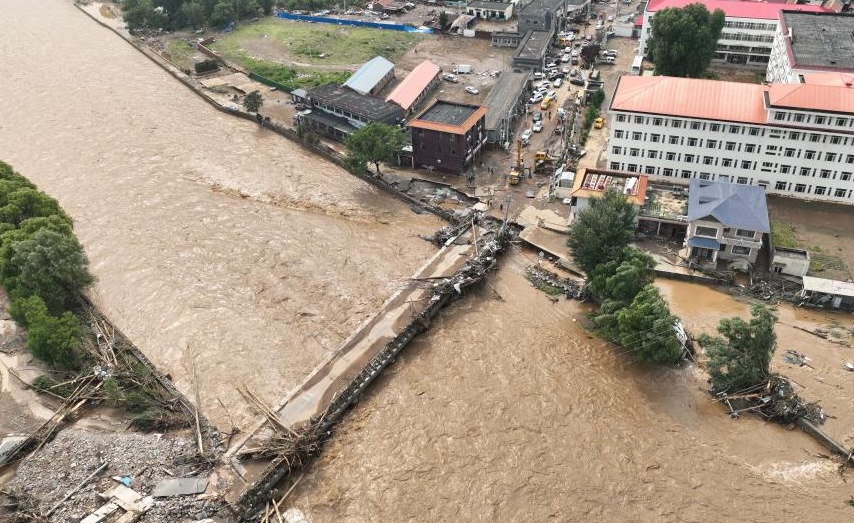Already a subscriber? Make sure to log into your account before viewing this content. You can access your account by hitting the “login” button on the top right corner. Still unable to see the content after signing in? Make sure your card on file is up-to-date.
Chinese officials have confirmed that more than 70 people have died after catastrophic floods wrecked northern China earlier this week.
Getting into it: The flooding, which was triggered by a shitload of rain between July 23 and 29, devastated northern China, pushing rivers far beyond capacity and overwhelming entire communities with little warning. In the Miyun district (one of the hardest-hit areas northeast of Beijing), over 21 inches of rain fell in just a few days, nearly matching the city’sannual total. The Qingshui River, normally a narrow stream, tore through roads, villages, and critical infrastructure.

Beijing’s deputy mayor Xia Linmao confirmed 44 deaths in the capital alone and outlined widespread destruction: 24,000 homes, 242 bridges, and hundreds of kilometers of road were severely damaged. In one of the deadliest single incidents, 31 elderly residents died after floodwaters rushed into a nursing home in Taishitun, where evacuation plans were never considered.
Online, many of those impacted took to social media criticizing the slow response to rural areas. Posts on Weibo also included people posting photos of their missing relatives. Notably, Chinese officials acknowledged their failures, with the CCP secretary of Miyun saying “Our contingency plan had flaws, and our understanding of extreme weather was inadequate.”
Under growing public pressure, President Xi Jinping called for “all-out” rescue efforts and told authorities to prepare for “worst-case and extreme scenarios.” He ordered that “no effort should be spared to search for and rescue those missing or trapped,” and pledged 200 million yuan (roughly $28 million) in emergency relief and infrastructure repair.







